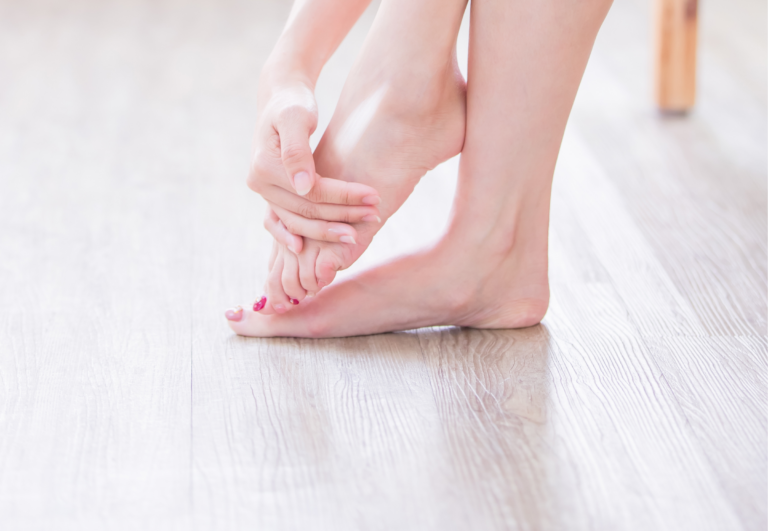How Toe Spacers Can Assist in Managing Diabetes-Related Foot Issues: Exploring the Potential Benefits
Toe spacers have been a revelation in managing foot health, especially for those living with diabetes. As a toe spacer enthusiast, I’ve seen firsthand how these simple devices can be beneficial. They work by aligning the toes into their natural position, which can help reduce the pressure points and friction that often lead to foot complications in diabetic patients.
Good circulation is vital for foot health in diabetes, as it can be compromised by the condition. Toe spacers are designed to promote better circulation by preventing toes from overlapping or crowding. This prevention of toe misalignment can be a key advantage for those with diabetes, helping to manage the risk of corns, calluses, and ulcers that are harder to heal due to poor blood flow.
Consistent use of toe spacers can be a straightforward strategy to maintain foot health for diabetics. They can serve as a prophylactic measure, complementing other diabetic foot care practices. While not a substitute for professional medical advice, toe spacers can be part of a proactive approach to foot care in diabetes management.
The Role of Toe Spacers in Diabetes-Related Foot Care
Toe spacers are an integral tool for enhancing foot health in individuals with diabetes. They are designed to address common diabetes-induced foot problems by providing better toe alignment and promoting circulation.
Mechanics of Toe Spacers: From Foam to Gel
Toe spacers are crafted from various materials, with foam and gel being among the most popular. I’ve found that foam spacers are lightweight and easily adjustable, perfect for those experiencing minor misalignments or seeking day-to-day comfort. Gel spacers, on the other hand, offer a more snug fit due to their malleable nature and are excellent for those with more serious toe alignment needs.
Foam Spacers:
- Lightweight
- Adjustable tension
- Suitable for everyday use and minor alignment issues
Gel Spacers:
- Snug fit and malleability
- Ideal for more significant toe realignment
- Offers additional warmth, which can help with blood flow and reduce swelling
Improving Foot Structure and Circulation with Spacers
With regular use, toe spacers actively work to improve the structure of the foot by realigning the joints and thus reducing the risk of numbness and neuropathy often associated with diabetic foot. Increased space between the toes can lead to improved blood flow, which is vital as diabetes can restrict circulation to the extremities. Better circulation not only helps with swelling but also supports overall foot health.
- Benefits of Toe Spacers in Diabetic Foot Care:
- Alleviate pressure and reduce numbness
- Minimize risk of neuropathy by maintaining proper joint alignment
- Enhance blood flow to counteract diabetes-related circulation issues
As a non-medical expert but an experienced toe spacer user, I emphasize the importance of incorporating orthotics like toe spacers into a diabetic foot care routine for maintaining optimal foot health.

Comprehensive Management and Prevention Strategies
My perspective on toe spacers has been shaped through years of experience. I believe they’re vital in a broad strategy for managing diabetic foot issues.
Strategizing Foot Ulcer Prevention
Preventing foot ulcers is essential for someone with diabetes. Consistent screening for risk factors, such as diabetic neuropathy and foot deformities, allows for early intervention. Well-fitting shoes and seamless socks minimize skin irritation. Toe spacers can help by maintaining proper toe alignment, which reduces the risk of corns, calluses, and blisters that can evolve into ulcers if left untreated.
- Screening: regular check-ups for early detection
- Risk Stratification: evaluating the severity of potential foot complications
- Footwear: selecting diabetic-friendly shoes to reduce pressure
Holistic Approach to Diabetic Foot Health
A holistic approach considers all aspects of a diabetic patient’s lifestyle. Monitoring blood sugar levels is fundamental for healing and prevention. Daily foot self-care, involving inspection for cuts or swelling, is crucial, and toe spacers can aid comfort by alleviating foot pain during walking. Regular consultations with healthcare providers, including podiatrists, ensure comprehensive medical care. Treatment plans can be personalized by incorporating evidence-based interventions to enhance foot care.
- Blood Sugar Control: crucial for overall diabetic foot health
- Foot Self-Care Tips:
- Check feet daily for signs of injury or infection.
- Keep feet clean and dry to prevent infection.
- Medical Care Consulting: ongoing dialogue with healthcare specialists
Diabetes and Its Impact on Foot Health
Diabetes can result in serious complications for feet due to poor blood circulation and nerve damage. Effective foot care, including the use of toe spacers, is crucial for individuals with diabetes.
The Role of Blood Sugar in Foot Complications
High blood sugar levels associated with diabetes can damage blood vessels, impeding circulation. The feet often suffer because they are farthest from the heart, leading to:
- Reduced ability to heal: Cuts or wounds on the feet heal slowly, increasing the risk of infection.
- Increased risk of ulcers: Persistent high blood sugar can lead to skin breakdown, creating foot ulcers.
Peripheral Neuropathy and Foot Issues
Neuropathy, or nerve damage, is a common consequence of diabetes, especially in the feet, causing:
- Loss of sensation: This reduces the ability to feel pain from cuts or sores, which might lead to unnoticed injuries.
- Changes in foot shape: Neuropathy can cause muscles to work improperly, resulting in misaligned bones and pressure points that may benefit from the correct use of toe spacers.
The Significance of Proper Diabetic Foot Care
Proper diabetic foot care is crucial to prevent serious complications such as foot ulcers that could lead to amputation. As someone well-versed in foot care, I emphasize routine podiatric check-ups and diligent foot hygiene to maintain diabetic foot health.
Benefits of Routine Podiatric Check-ups
Visiting a podiatrist regularly is key for anyone managing diabetes. These health care professionals can:
- Identify problems early: Catching issues like corns or calluses before they turn into ulcers.
- Offer footwear advice: Ensuring your shoes and socks support diabetic foot care, reducing the risk of injury when you’re barefoot or otherwise.
Essential Foot Hygiene and Nail Care
Daily care routines are vital for diabetic foot health:
- Wash and inspect feet: Use soap and water, then dry carefully, especially between the toes.
- Trim nails correctly: Cut nails straight across and file the edges to avoid ingrown toenails.
Having diabetic-friendly footwear is just as important—well-fitting shoes and moisture-wicking socks protect your feet and reduce the likelihood of complications.
Identifying and Managing Common Foot Issues in Diabetics
Managing diabetes involves close attention to foot health to prevent serious complications like ulcers and infections. Timely treatment of calluses, corns, and wounds is essential in diabetic foot care.
Recognizing Early Signs of Ulcers and Infections
Diabetics must regularly inspect their feet for early signs of trouble. Ulcers, often starting as a small skin break, can lead to serious problems if not promptly addressed.
Look for redness or warmth around a wound, which can indicate an infection. Reduced sensations due to neuropathy can make this challenging, so it’s vital to be vigilant and seek medical advice if you notice such changes. Pulses in the feet should also be checked to assess circulation.
Signs to look for:
- Redness
- Warmth
- Blister
- Any fluid or discharge
Actions to take:
- Inspect feet daily
- Wear proper footwear
- Consult healthcare provider if any sign is present
Treating Calluses, Corns, and Wounds
For diabetics, even minor foot issues can lead to significant health risks. Use a mirror or ask for help if you cannot see all parts of your feet. A proper foot care routine includes moisturizing to prevent calluses and using padded footwear to avoid corns.
If you develop these conditions, they should be managed carefully. Over-the-counter treatments are available but should be used with caution due to the risk of skin breakdown. For wounds, clean dressing and protection are key, and any signs of infection should trigger an immediate consultation with a healthcare provider.
- Care tips:
- Moisturize feet regularly to prevent calluses
- Choose well-fitting, protective shoes
- Treat wounds with clean dressings
- Monitor for infection signs and contact healthcare provider if needed





